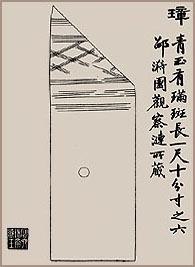
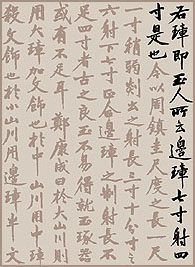
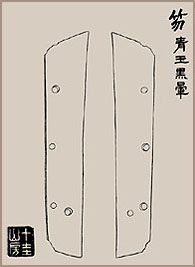
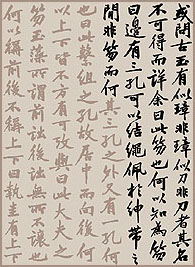

Three-hole Knife
Ch'i-chia Culture
(ca. 2200-1800 B.C.)
Length: 57.5 cm, width: 10.2 cm, blade width: 2.4
cm, thickness: 0.81 cm
Carved from dark green jade, both ends here reveal even darker diagonal green sections. Horizontal banding also appears. Asymmetrical in shape, the blade of this knife is slightly concave and was ground to a fine edge; the blade line is quite evident. Near the spine of the knife, three holes with straight walls were drilled from one side. The narrower end of the knife to the right also has a curved notch along the spine.
Traditional studies on chang blades in "Illustrated
Study of Ancient Jades"
...mention that there were different
opinions regarding its terminology. This type of multi-holed jade blade
was sometimes referred to as a chang blade and at other times as a hu
tablet.






Kuei Tablet
Late Lung-shan Culture to Erh-li-t'ou Culture
(ca. 2200-1600 B.C.)
Length: 18.8 cm, max. width: 5.4 cm, thickness:
1.29 cm
The color on both sides of this lustrous jade tablet differs slightly. One side is light chestnut and the other is yellowish ivory. The sides broaden down to a unsharpened blade. The narrow end has two drilled holes, one large and the other small. The large one was drilled from both sides and the small one from one side. The jade is undecorated.
One side was engraved with poetry and an imperial seal. The tablet was adorned with tassels and jade fittings, and a wooden box.
Traditional studies on
kuei tablets in "Illustrated Study of Ancient
Jades"
...mention that this kuei tablet had a hole in the
middle and that it was a ritual ornament held by the emperor when
venerating the sun. The hole was used to fasten the kuei as part of the
emperor's regalia.
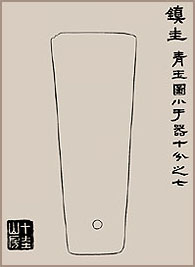
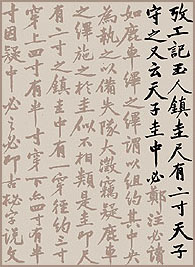
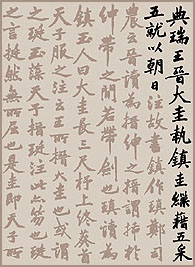



Kuei Tablet
Late Lung-shan Culture to Erh-li-t'ou Culture
(ca. 2200-1600 B.C.)
Length: 24.6 cm, max. width: 7 cm, thickness: 1.2
cm
The jade of this kuei tablet is light chestnut in color, but the wider end is brown and the narrow end black. This lustrous jade has sides that broaden down to an unsharpened blade. Two holes were drilled through the narrow end. The smaller one is near the edge and was drilled from one side. The larger hole is closer towards the center and was drilled from both sides. The engraved decoration in low relief is composed of beast masks above a band of intricate designs. The upper part (shown inserted into the wooden stand) has different mask designs on either side.
Both sides were engraved with a poem and imperial seals (at the top and bottom) of the Ch'ien-lung Emperor (r. 1736-1795), and the tablet rests in a specially designed wooden stand.